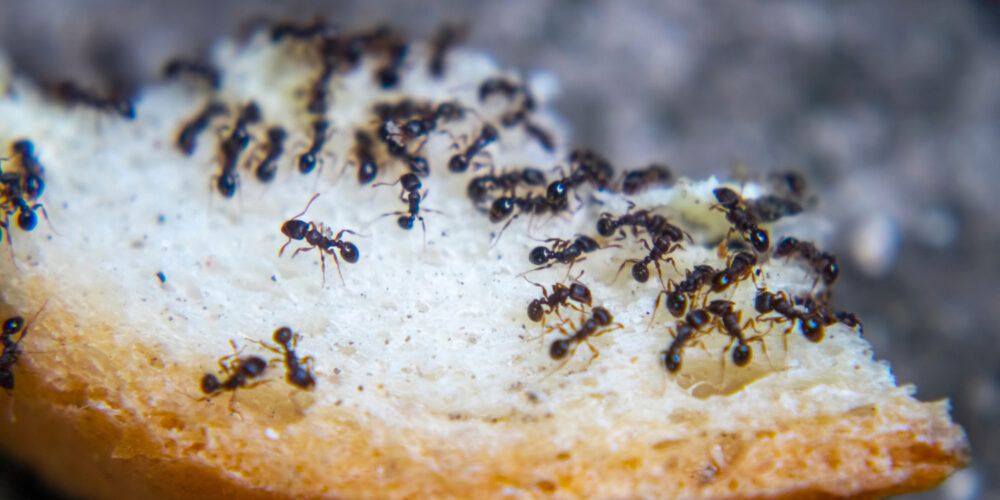“Occasional invaders” are pests that don’t live indoors year-round, but sneak in seeking moisture, shelter, or warmth, especially after rain or when the seasons change.
While not typically dangerous, they can still damage property, contaminate surfaces, or become a nuisance when they show up in large numbers.
Here are the most common occasional invaders we see in Southern Utah:
1. Silverfish
- Appearance: Small, silvery, and teardrop-shaped with long antennae and tail bristles
- Behavior: Thrive in humid areas like bathrooms, attics, and under sinks, fast-moving and often active at night
- Risk: Feed on paper, glue, books, clothing, and wallpaper, can damage insulation due to nesting and feeding
2. Earwigs
- Appearance: Brown to black with pincers (forceps) at the rear
- Behavior: Attracted to moisture, often found in mulch beds, basements, and laundry rooms
- Risk: Don’t bite or sting, but can pinch if handled; can damage plants
3. Springtails
- Appearance: Tiny, gray or black, and jump when disturbed
- Behavior: Thrive in moist environments like soil, bathrooms, and potted plants
- Risk: Harmless but can be mistaken for fleas and appear in large groups and can be very difficult to remove once infesting a home
4. House Centipedes
- Appearance: Long legs, yellow-gray body with dark stripes
- Behavior: Hunt other insects; found in bathrooms, basements, and under baseboards
- Risk: Mostly harmless and even beneficial, but their appearance can be alarming
5. Crickets
- Appearance: Brown or black with large back legs for jumping
- Behavior: Prefer dark, damp areas like crawlspaces and garages, mainly come inside in the summer and fall
- Risk: Noisy at night and may chew on fabrics or paper products
6. Solpugids (Sun Spiders/Wind Scorpions)
- Appearance: tan to reddish-brown color with large jaws, 8 legs, and an additional pair of leg-like sensory appendages
- Behavior: Fast-moving, aggressive hunters, nocturnal, attracted to light which may cause them to enter homes while hunting
- Risk: Non-venomous but can bite, alarming appearance can cause fear or panic, may indicate a lager insect population
7. Beetles
- Appearance: Shiny black or brown with a hard shell
- Behavior: Attracted to light; found near foundations or inside basements, often wander inside by mistake during seasonal changes
- Risk: Don’t damage property or bite, but can be a nuisance indoors
Why These Pests Matter
Even though occasional pests aren’t usually dangerous, they can still:
- Damage belongings like books, wallpaper, and clothes
- Signal moisture problems in basements, crawlspaces, or around foundations
- Cause stress or discomfort when they show up in large numbers
- Attract more pests, especially if food or moisture is left unaddressed
Our Control of Occasional Invaders: Preventive & Targeted Treatment
How We Treat Occasional Pests:
- Inspection: Identify problem areas, entry points, and moisture sources
- Targeted Perimeter Spray: Apply a residual treatment around the home to stop pests before they enter
- Interior Treatments (if needed): Treat cracks, baseboards, and entry zones where pests are active
- Moisture & Exclusion Guidance: Help you fix conditions that attract these invaders
Why Our Approach Works:
- Safe, Ecofriendly Products: Effective treatments that are family- and pet-safe
- Seasonal Protection: Designed to block pests year-round, especially during key transition months
- Discreet & Low-Impact: No need to leave your home or prep heavily

